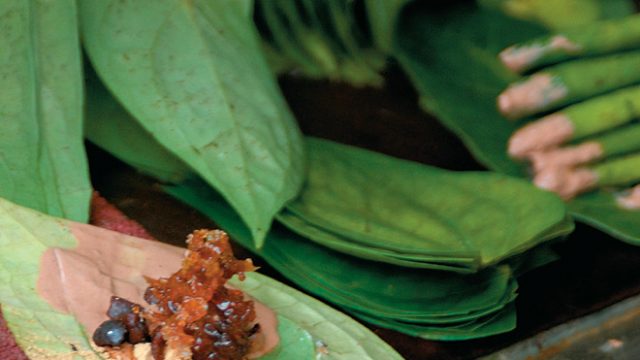At the end of a typically Banarasi meal, you end up having a paan. The most well-known secret that we non-paan eaters are denied access to is the fact that the Banarasi paan is strictly speaking not from Banaras (Varanasi) at all. Or at any rate its leaf is not. The paan ka patta, which brings tears to dedicated Banarsis’ eyes, is called Maghai and is grown in Bihar. It could be a Jagannathi and grown in Orissa. It could even be a Desi grown in eastern Uttar Pradesh — in areas such as Jaunpur — but that’s infra dig.
From Mishraji, who swears that the Maghai leaf is soft and melts in the mouth, to Pandeyji, who points out that it leaves no resha (strands) in the teeth, all are in agreement. At the wholesale market, the traders wait eagerly for the annual consignment of Maghai that grows in winter and proceed to culture it. The leaves are kept in baskets with burning coal nearby, sometimes covered with wet cloth so that they retain moisture but do not get too dry or too wet. “Bete se zyaada sambhaal kar rakhte hain,” says a paanwala. Hardly surprising, for after ‘season’ ends in March-April, you can hoard your stocks of well cultured leaf and sell it at double the price. Currently, the famous paanwala is one Keshav at Lanka Chowk.




